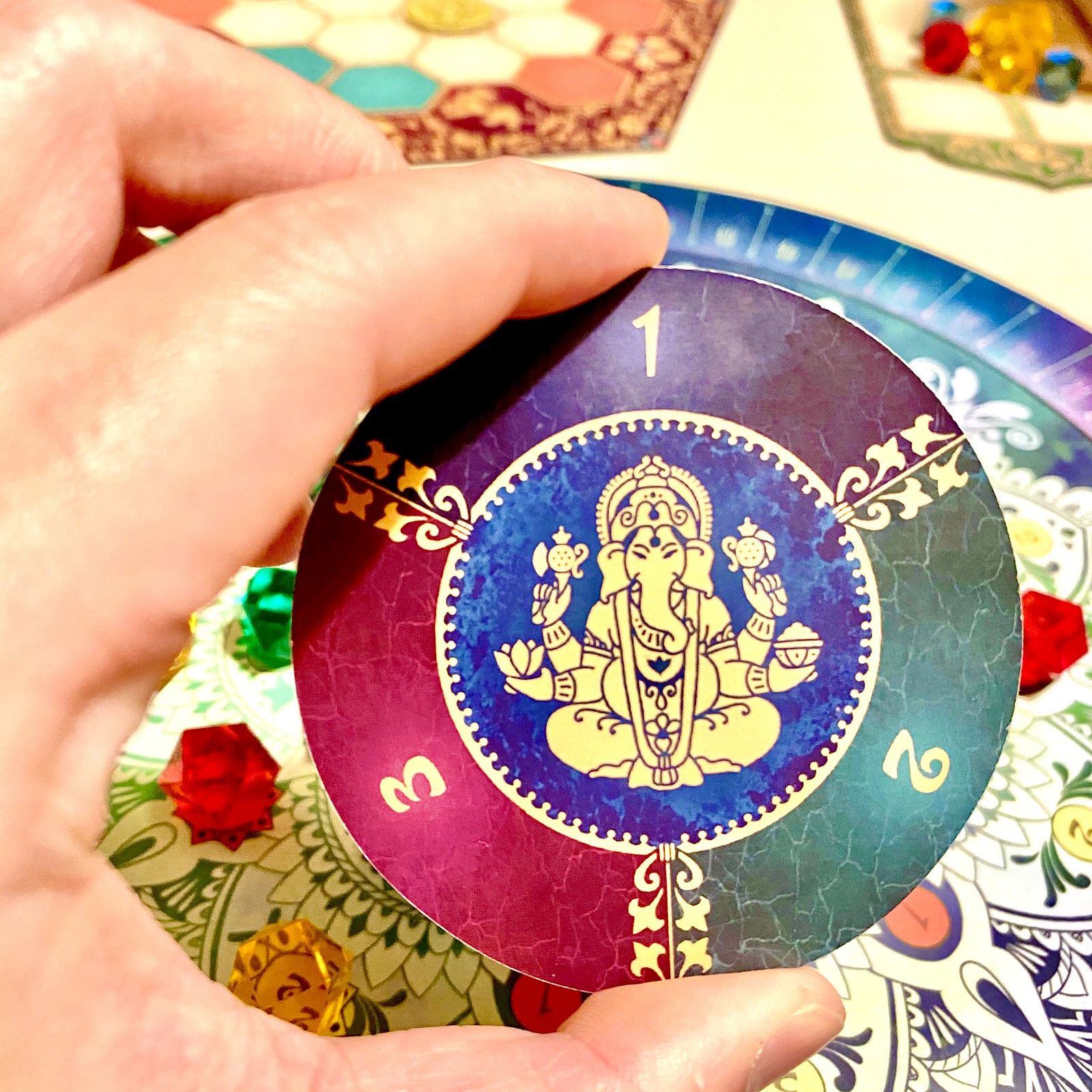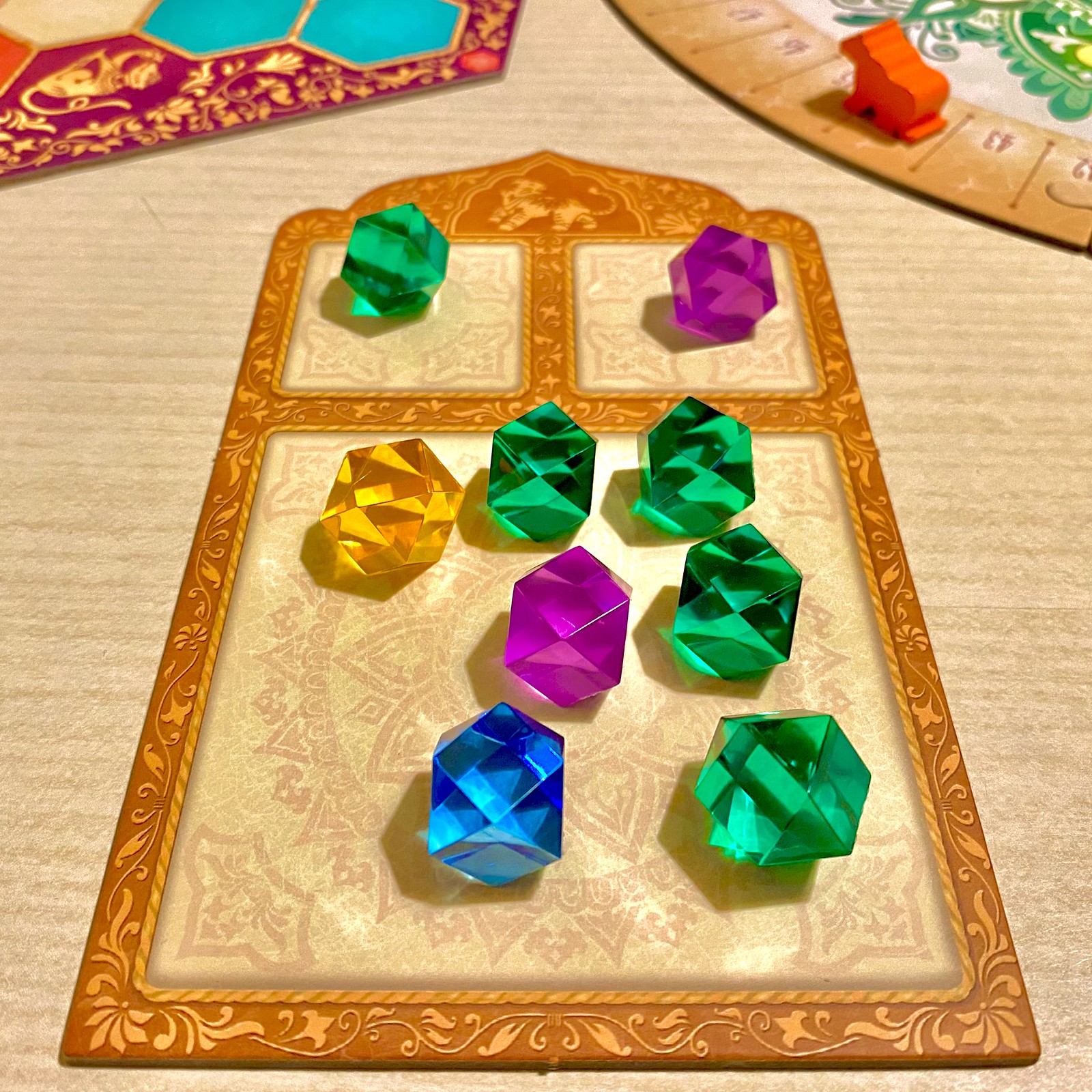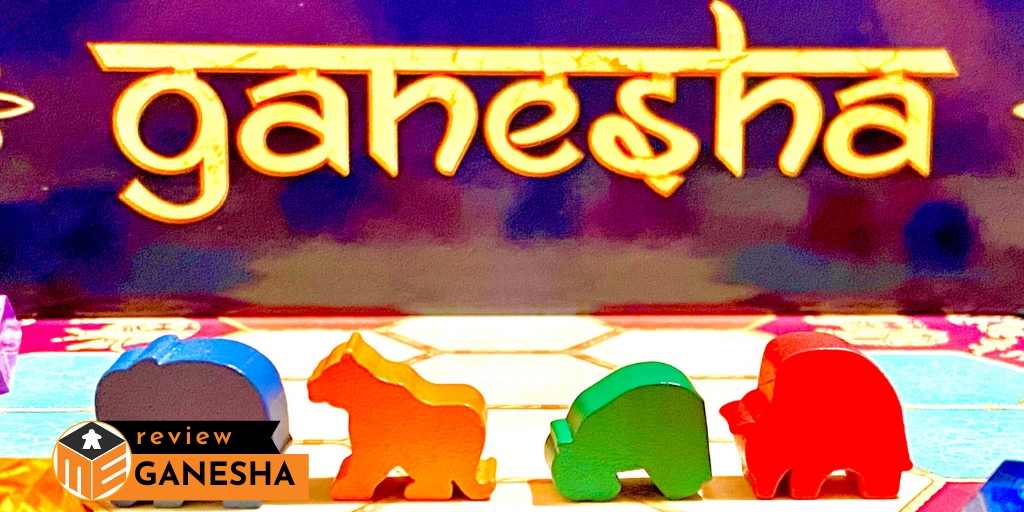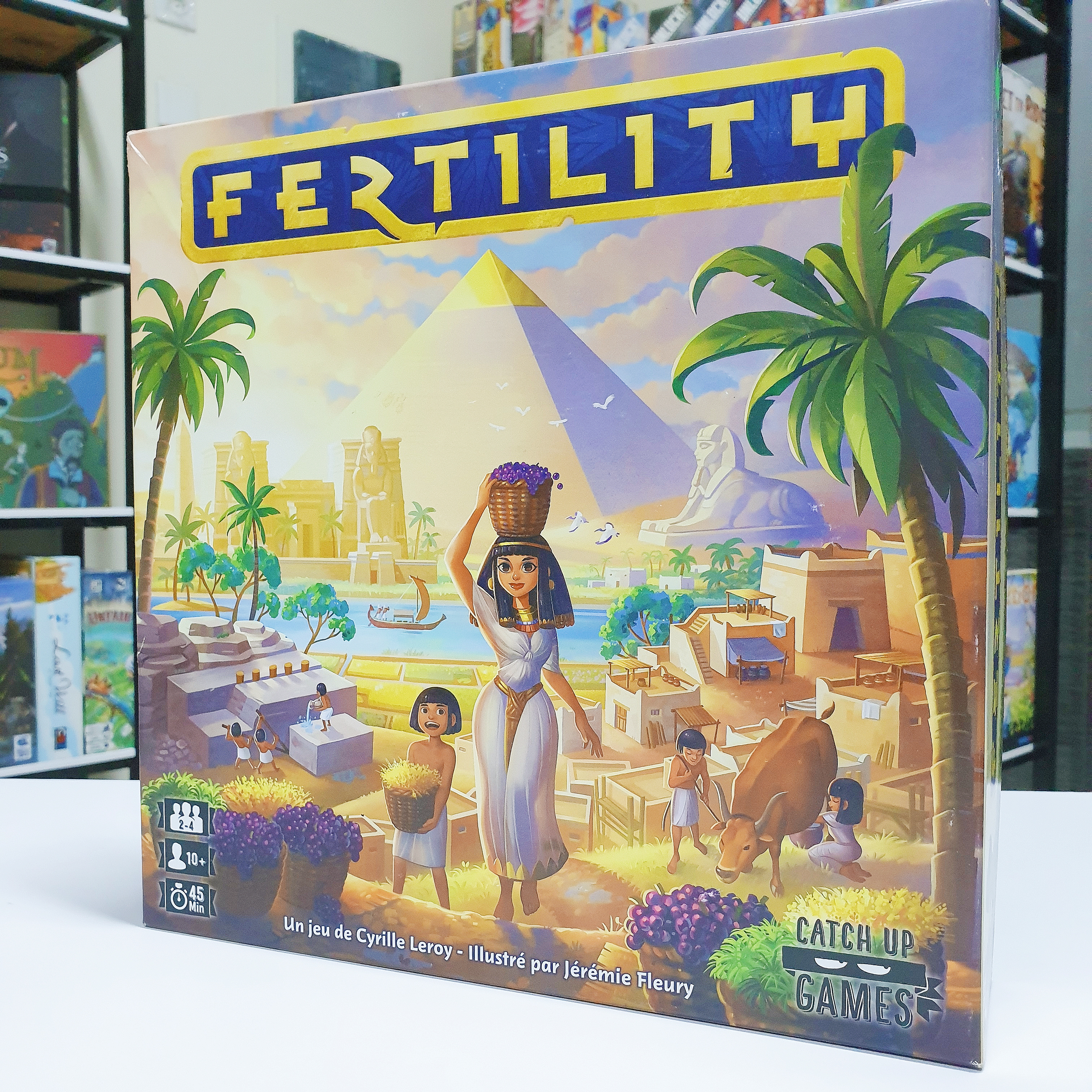Considering accessibility and inclusivity, I prefer to purchase abstract games to any other genre/kind, and that’s why Ganesha had been in my BGG wish list for a while. Abstract games tend to be (if not always) language-independent, and that’s why I love them.
Before I go further, I think it would be fair to say I didn’t buy the game by myself. This copy of Ganesha was my Christmas gift from a very thoughtful Secret Santa. Derailing a bit more, I can recommend you to join this annual event on Reddit and Board Game Geek (BGG). Now, let’s get back to the game.
A short disclaimer before you read my board game analysis
As an avid euro gamer and hardcore Legend of the Five Rings (L5R) LCG player, my reviews may reflect a preference for these styles, and I may not cover solo games/variants extensively. Please note that my personal remarks are based on my gaming experiences, and I aim to provide honest insights within the scope of my preferences.
With Greek mythology, I am quite familiar although not really an expert in it. However, it is the opposite with Indian lores of gods and goddess. I needed to do some researches before writing this article. Thanks to my experience living in Bali for a while, I know that Ganesha is one of the most worshipped Hindu deities. Depicted with an elephant head, Vinayaka, his other alias, is widely acknowledged as the patron of art and science, the god of intellect and wisdom, and the remover of all obstacles. In this board game, he would grant favour for the best who can decorate the magical mandala with gems.
MY FIRST IMPRESSION ON GANESHA

Ganesha’s box is wrapped in dark blue (sorry I am not eloquent enough to know this colour’s real name), the title is written in a font that replicates Sanskrit. In contrast to the background, the artwork is more colourful and vibrant. The Deva figure greets you with his warm gaze. Behind him stands the flamboyant mandala. Overall, the cover itself can steal your heart already, and when you go deeper, the artworks on the first player token (Ganesha’s drum), scoring tracker, and mandalas are stunning. Most of the boards have two sides, day and night, and I love the latter one because of the stronger psychedelic effect. Fun fact, Ganesha is written गणेश.
When we unboxed the game, we were in awe. Ganesha’s insert was designed neatly, everything fits perfectly within. It sure helps with storage because I don’t need to worry whether to position my copy horizontally or vertically on the shelf.
The components
Next on the list is the components, and I’d start from the gems (because they are the basis of this game). I have played some other games that utilize the usage of a similar component. Comparing to the gems found in Istanbul and Mystery of the Temples, for example, the ones we found in Ganesha is larger, if not colossal. That means they are easier to handle, feel better in our hands, and friendlier for players with bigger hands.
The game boards are in decent quality, too. They are thick and robust, and most importantly, wrapped in pretty artworks. CrowD Games really gave an extensive effort to envelop an abstract game like this, making it looks lovely. Andrei Osinin was the man in charge of the illustration in Ganesha (I hope the publisher updates their entry in BGG and add Andrei’s name in the artist section, it still shows N/A).
I also like the player trackers in Ganesha. They depict four sacred animals from India (monkey, elephant, tiger, and cow). Will there be an expansion for five players later on? They can take the last one, the snake, into the wagon, and the team is complete! The animals are also printed on the Destiny tile with corresponding colours.
My personal comments on Ganesha’s rulebook
This game’s rulebook is quite thin if we compare with other games with similar complexity and size. There is, however, a room for improvements. I need to read them several time before I understand what Ganesha wants from me. Some wordings are difficult to understand, but for sure can still be helped by proper editing. As we didn’t fully understand, we decided to start playing. The ‘learning by doing’ effort was fruitful, though, but I am more comfortable to understand the whole context first before delving into the game.
GAMEPLAY IN GANESHA, WHAT TO EXPECT FROM THIS GAME
We tried playing with three players for our first game. Ganesha is all about planning and devising strategy. Granted, that there is a randomized aspect in this game. The gems we had each round were drawn out of the pouch randomly, but that didn’t mean luck plays the most important role in this game. Playing Ganesha needs to have the proper knowledge on when to place the gems on the mandala. Too soon and we scored too few. In contrast, a tad too late gave our opponents the chance to seize the best points. This realization came after we reached the late-game state.

Players draft the drawn gems on the board, taking whichever without any plan will render you impotent. You can only take gems in the first place when there’s a gem with matching colour on the Altar and your Destiny slot. If you cannot take any gem, you are skipped, but you can still score points (if you have the necessary gems). Be as it may, I don’t think we can afford to lose any chance to take gems from the Altar. More gems mean more points to score.
Remember, to score (putting gems to Mandala) we mostly need to sacrifice a gem first before moving all other gems of that colour to the scoring board. If you don’t have enough gem in your Treasury, you can’t score effectively. This shows the set collection aspect in this game, a mechanic that commonly gets paired with drafting to gather points. (the ones we can find in some other games like Sushi Go, for example).
What we loved from Ganesha
The game with three players was the best so far in comparison with other player counts. I think this is the best and recommended number of players to enjoy Ganesha to the fullest. There were so many things happening during the gameplay, but the game was still simple to follow. The round began and ended quite swift, so the game didn’t get dragged too long.
With the end-game rule, Ganesha still gave hopes for the players with the lowest score to catch up. All players placed the leftover gems on their Destiny board to the Mandala, one-by-one during each turn. There was this nice, tingling sensation when we saw the Mandala got filled with gems.
Additionally, the Spice tokens also needed to be considered during the game. Some of them contributed hugely in my winning moves. They brought effects that bent the rules a bit, giving you some rooms to manoeuvre.
The Beautiful artworks and illustrations that cover this game drove us to play the game. It felt good, and we were enthusiastic even during the setup. In the end, we savoured what pleased our eyes.
What can be improved

It felt strange when Ganesha’s drum is passed to the next player after three rounds, not per round. It sure breaks the norm. Additionally, the player who holds this first player marker also gets one point extra after the round ends. That means two extra points for doing nothing!
In a four-player game, the last player will never get the Ganesha’s drum. That means, s/he doesn’t have the chance to be the first player. The fourth player gets a two-point handicap at the start of the game. We thought this was a fair handicap.
Two points could be an important lead and a deserved advantage in exchange for not becoming the first player ever… Or so we thought… We were wrong so much. It is a bit unfair and definitely does not give the fourth player any advantage. All other players do get the same two points for free before they pass the marker to the next one. Meanwhile, becoming the first player has a significant advantage in a drafting game. It takes more than a mere two points to be deprived of such privilege.
REPLAY VALUE & RECOMMENDATION
The drafting process bestows variations which lead to different gaming experience whenever we replay Ganesha. The utilization of Spice tokens reward the game with higher replay value as well. Ganesha can still attract us to play it once more in the future, albeit the aforementioned oddities in the previous chapter. It is fun enough to get our attention after the first few games, maybe not regularly, but Ganesha will be more often than seldom hitting the table.
With the weird ruling for four, we were not convinced to play it in quartet. As I have written above, we really enjoyed a trio session with Ganesha. Well, the duet may not be nail-biting, but still better than the game with four players.


Ganesha can be a good option for players who look for a drafting and set-collection game that does not use cards as its main component. For those who love abstract games, this is a good choice if you want to expand your collection. The game is newbie-friendly with its simple rules and easy-to-teach nature. If you are looking for a more complex game (and if you are easily triggered with imperfection in gaming design), you can turn away from this game.
CONCLUDING THOUGHTS
As an abstract game, Ganesha does not really need a theme. Thankfully, Maxim and CrowD Games still provided great presentation for this game. I could say it is one of the main selling point. The game is a decent one, but there are some rooms for improvements. It would have been better if the game is designed for up to three players, anyway. With a lot of better board games out there, Ganesha may not be so memorable. Nevertheless, the name Maxim Istomin has been put on my radar. I am looking forward to playing his next game.
I am a full-time food technologist during weekdays. However, when the calendar hits weekends, I transform into an avid board gamer. I am a hardcore Legend of the Five Rings (L5R) LCG player from Fantasy Flight Games (FFG). Current hobby: buying board games. My shelf of shame’s list is getting longer, thanks to you, Kickstarter.





